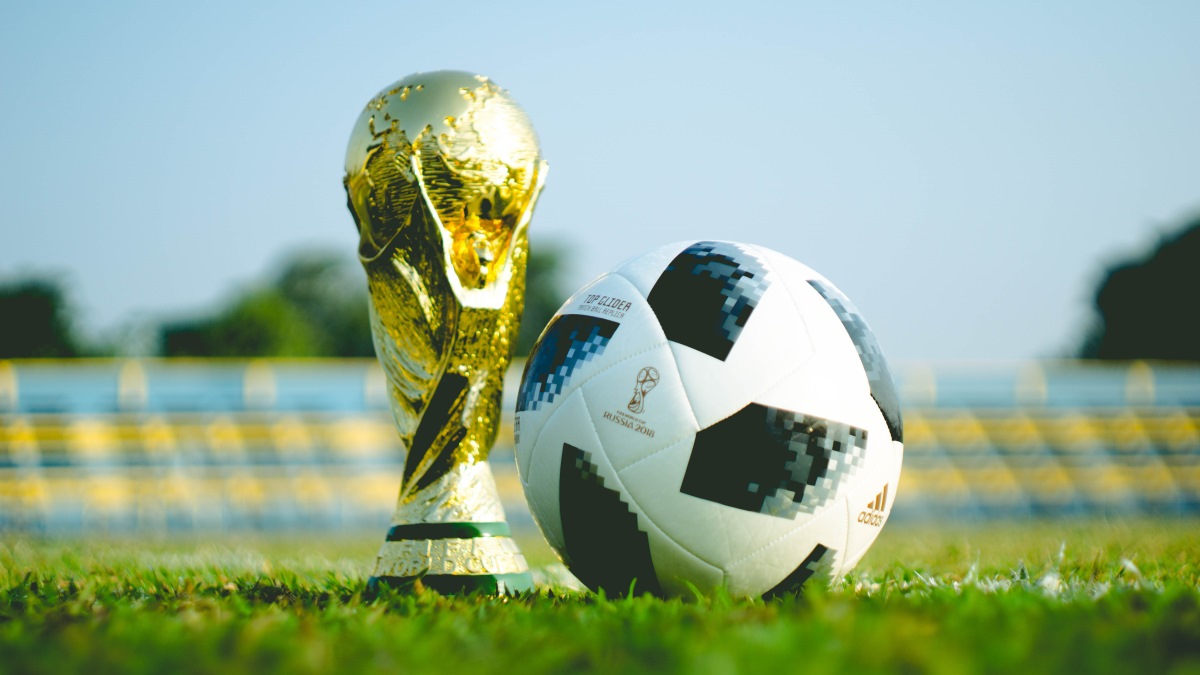In 2025, international travel from India is more accessible than ever before. Looking for the best countries to visit from...
Read More
December 8, 2025
Top 5 Budget-friendly International Destinations for Indian Travellers

If you are an avid football fan, the wait is nearly getting over! It’s finally time to give your full attention to the pitch. The FIFA World Cup to be held in Russia from June 14 to July 15, 2018, will be a treat to behold. It comes around once every four years, but capture the hearts, mind and sleep of millions worldwide like no other event.
Let’s look at different aspects of one of football’s biggest event.
The national football teams of 32 countries have qualified, including Russia being the Host Country, and are divided into 8 Groups. 64 matches will be played over 32 days at 12 stadiums in 11 host cities. The overall estimated capacity of these stadiums is around 600,000 seats. Ten of the stadiums are either brand new or have been built within the past five years. Only the Luzhniki Stadium in Moscow and Central Stadium in Yekaterinburg have been renovated extensively for the tournament. The Luzhniki Stadium at 81,000 seats is the largest and is the venue for the kick-off, a semi-final and the Final match.
The first part of the 2018 FIFA World Cup brand identity, the official emblem was revealed on October 28, 2014. This key visual asset was unveiled with the assistance of the International Space Station crew and complemented by a light projection on the historic Bolshoi Theatre in Moscow. The launch was embedded in a special TV show in Moscow attended by FIFA dignitaries. According to officials, the shape of the logo takes on the universally recognisable outline of the World Cup Trophy. Inspiration was also drawn from Russia’s rich artistic tradition and history of achievement and innovation and its pioneering in space.
The emblem’s colour palette (the bold use of red, gold, black and blue) is based on centuries-old techniques seen in world-renowned Russian art dating back to the earliest icon paintings.
The world’s love of football is put into the spotlight by the magic ball at the top of the emblem. The components of the emblem when taken together signify the unique attributes of the World Cup and of the host nation Russia.
Through the online Be There with Hyundai Contest, FIFA Fan Club members (free registration) got the chance to pick a slogan (from the three shortlisted) for each participating nation. Each of the 32 team’s final winning slogan will be displayed on their respective team buses. It’s a unique way to get fans involved in celebrating and cheering their teams on. What’s even more exciting for the creators of the winning team bus slogans, is that they win an amazing trip to Russia for the FIFA World Cup 2018 with lots of benefits…. the most special of which is the opportunity to escort the team for which they presented a winning slogan, to the stadium for one of their matches.
FIFA World Cup Posters over the tournament’s history have been considered as genuine works of art. They tend to draw interest from dealers, collectors of football memorabilia, members of the artistic community and football fans all over the world.
The 2018 FIFA World Cup Official Poster was unveiled in the Russian capital at the famed Moscow Metro ahead of the Final Draw in November 2017. The very first print of the unveiled poster, signed by the officials participating in the ceremony, was presented to the Russian national football squad’s goalkeeper Igor Akinfeev.
The official poster was designed by Russia’s renowned artist Igor Gurovich. He chose the Ballon d’Or-winning legendary Soviet goalkeeper Lev Yashin as the central figure of his work. Yashin played in four FIFA World Cups and has the distinct honour of being the only goalkeeper in the history of football to win the prestigious Ballon d’Or. Throughout his career, he stopped a total of over 150 penalty kicks, by far more than any other goalkeeper in history. Yashin is shown on the poster dressed in his traditional outfit of black shirt and shorts, knee brace and his famous cap. On one half of the poster, he is shown reaching for the ball, which is a typical football from his era, and the other half depicts the vast landmass of Russia as seen from space. The rays of light emanating from the ball symbolises the tournament’s energy, and the circle of green represents the stadium pitches.
Every FIFA World Cup since 1966 has its own mascot. The mascot for that competition, Willie was one of the first mascots to be associated with a major sporting competition. A mascot’s design always represents a characteristic feature of the host country like the costume, flora, fauna, etc.
The 2018 FIFA World Cup Official Mascot unveiled on 21 October 2016 is Zabivaka, meaning ‘the one who scores’ or ‘The Goalscorer’. The creator is student designer Ekaterina Bocharova.
Zabivaka is a wolf who radiates fun, charm and confidence and might fondly be considered as the youngest player in the squad. He sports a brown and white wool T-shirt with the words ‘RUSSIA 2018’, with put-on and removed orange sports glasses. The combination of white, blue and red T-shirt and shorts are the national colours of the Russian football team.
The mascot was selected by internet voting during a month-long voting period, concluding the most engaging creative process for an Official Mascot in FIFA World Cup history, where more than one million votes were cast on FIFA.com.
It’s worth getting to know all about the FIFA World Cup 2018 – Russia and its Host cities. Experience the best of this vibrant and colourful nation, while enjoying world-class games at the diverse destinations. Plan your travels accordingly so you can have the trip of a lifetime!

FOLLOW US ON
Copyright © 2023 : Travco Holidays Pvt. Ltd. All Rights Reserved.
Developed by : Online Productivity Solutions Pvt. Ltd